An olive ridley sea turtle hatchling lurches alongside the sand to the ocean in Velas, India.
Diaa Hadid/NPR
disguise caption
toggle caption
Diaa Hadid/NPR
VELAS, India — Little youngsters giddily squeal as a child sea turtle, flippers flapping, lurches towards the water with the grace of a drunk lunging for a cab at closing time. Vacationers applaud as a couple of dozen extra palm-sized hatchlings stumble into the ocean.
The vacationers had gathered at dawn on an April day for the Velas Turtle Competition, on the western Indian coast, the place volunteers invite guests to observe them launch child turtles from a hatchery — like an animal pen on the sand.
The volunteers collected the eggs from turtle nests on the shore, successfully holes that females dig with their flippers, and the place they lay dozens of eggs at a time. The eggs are taken contained in the hatchery to guard them from predators, akin to canines and gulls.
As soon as the infants hatch, they’re launched underneath supervision to make sure the predators do not decide them off as they crawl to the ocean. Even in any case these efforts, most of them will probably be killed by predators within the waters. Solely one out of each 1,000 olive ridleys is more likely to ever attain maturity.
The slim survival charge of olive ridley sea turtles comes with different pressures which have left them listed as “weak” to extinction by the Worldwide Union for Conservation of Nature, whilst they inhabit a world band of tropical waters. And for many years, conservationists feared their populations would collapse throughout India. They had been suffocating after being caught in fishnets — turtles want to return up for air, identical to people. They had been slaughtered at scale for meat and leather-based. Their eggs had been poached.
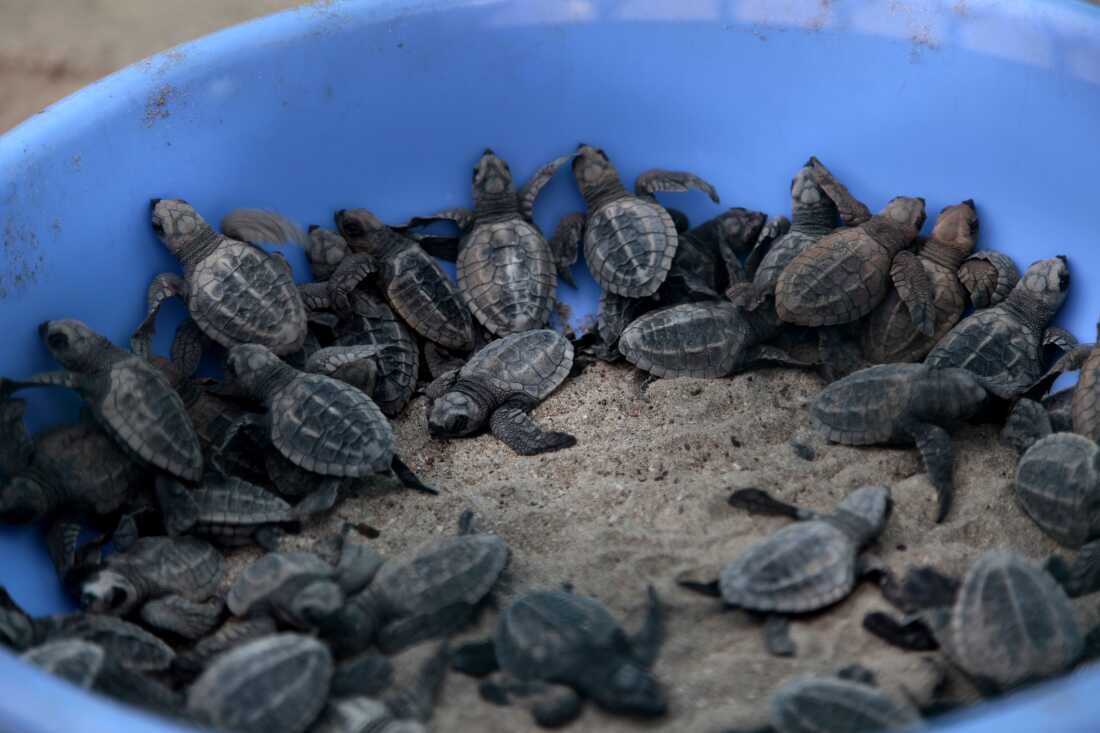
Olive ridley turtle hatchlings are positioned in a bucket after they had been collected from a hatchery by volunteers.
Diaa Hadid/NPR
disguise caption
toggle caption
Diaa Hadid/NPR
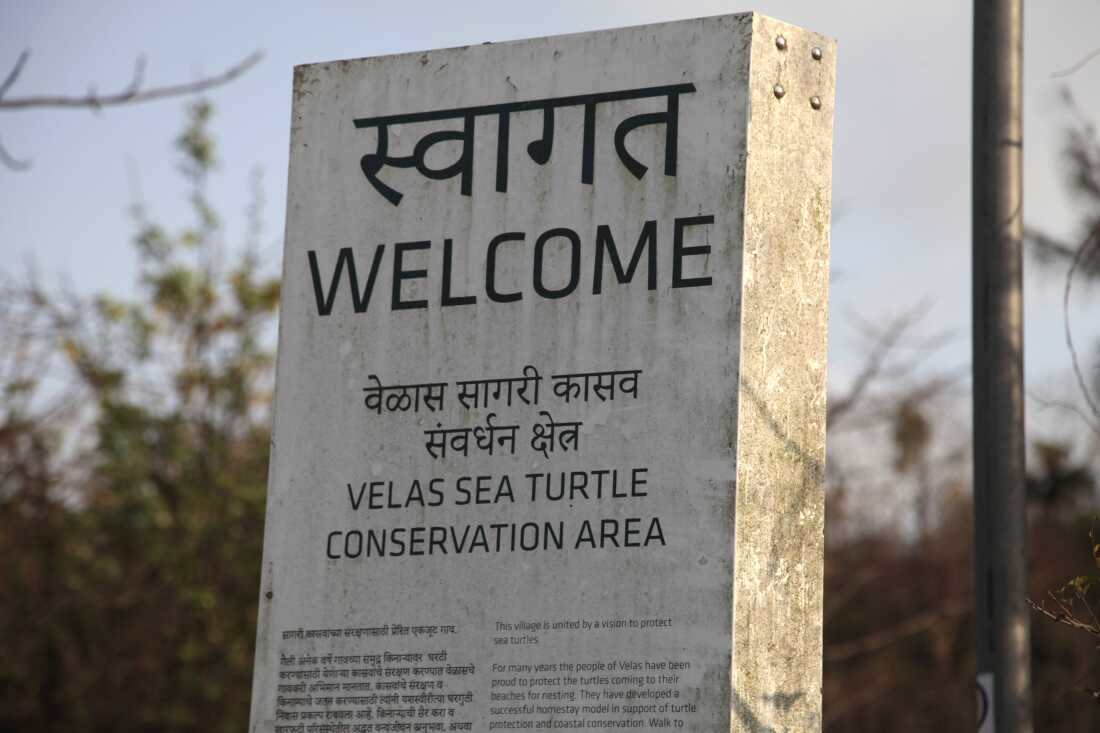
An indication welcomes vacationers to the Velas Sea Turtle Conservation Space, within the western Indian seaside village of Velas, the place olive ridleys come to nest.
Diaa Hadid/NPR
disguise caption
toggle caption
Diaa Hadid/NPR
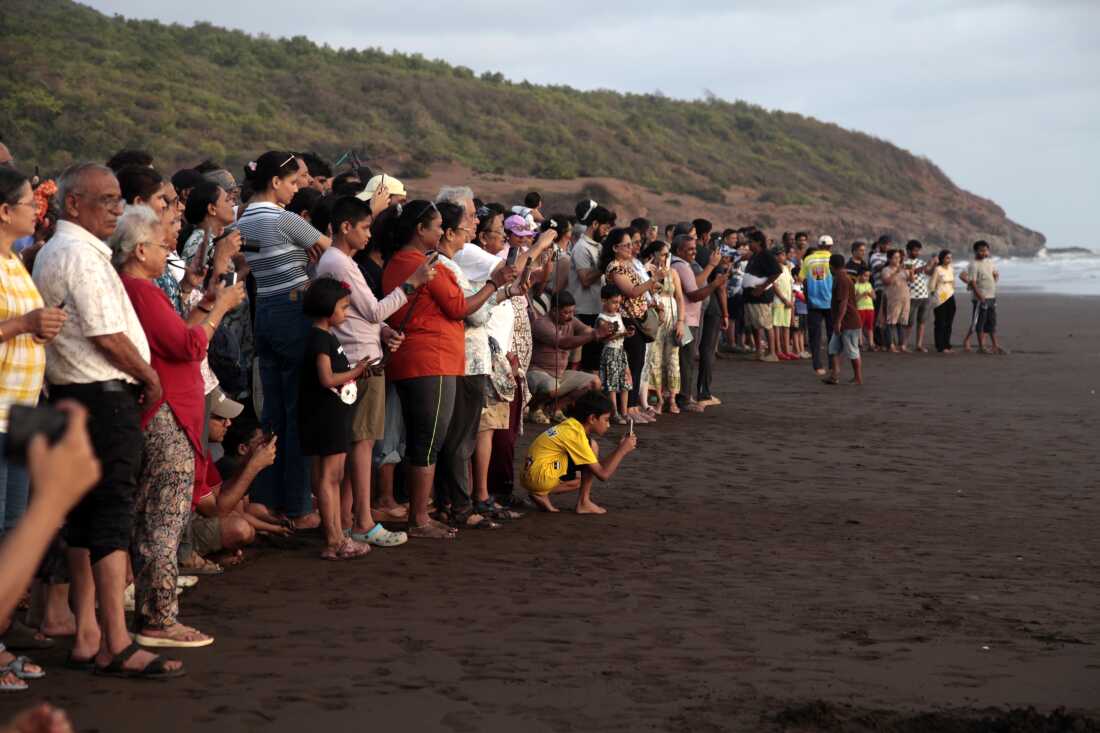
Vacationers watch and take movies and images as olive ridley turtles crawl into the ocean, in Velas, India, in April.
Diaa Hadid/NPR
disguise caption
toggle caption
Diaa Hadid/NPR
Kartik Shanker, a number one Indian sea turtle professional and creator of From Soup to Celebrity, says round 20 years in the past, conservationists counted not more than 100,000 turtle nests throughout the nation. The threats to olive ridleys “were significant, and if they had been allowed to continue unabated, we may have seen the crashes that we were predicting.”
“But when some measure of protection was put in place,” he says, “these turtles, olive ridley turtles, have rebounded.” In the course of the previous winter’s nesting season, he says conservationists counted “about a million nests, which is crazy high.”
Safety efforts in India embrace seasonal fishing bans, protected coastal zones — and occasions just like the Velas Turtle Competition.
It attracts guests like IT specialist Anuja Bhingare, who took an in a single day bus after seeing the pageant on Instagram. “It’s very nice to see baby turtles taking their first step into their home,” she says. Her pal, Madhuri Dixit (no relation to the Indian film star with the identical identify), says she worries that if extra vacationers come, “they will make the place dirty,” by throwing trash on the seashore.
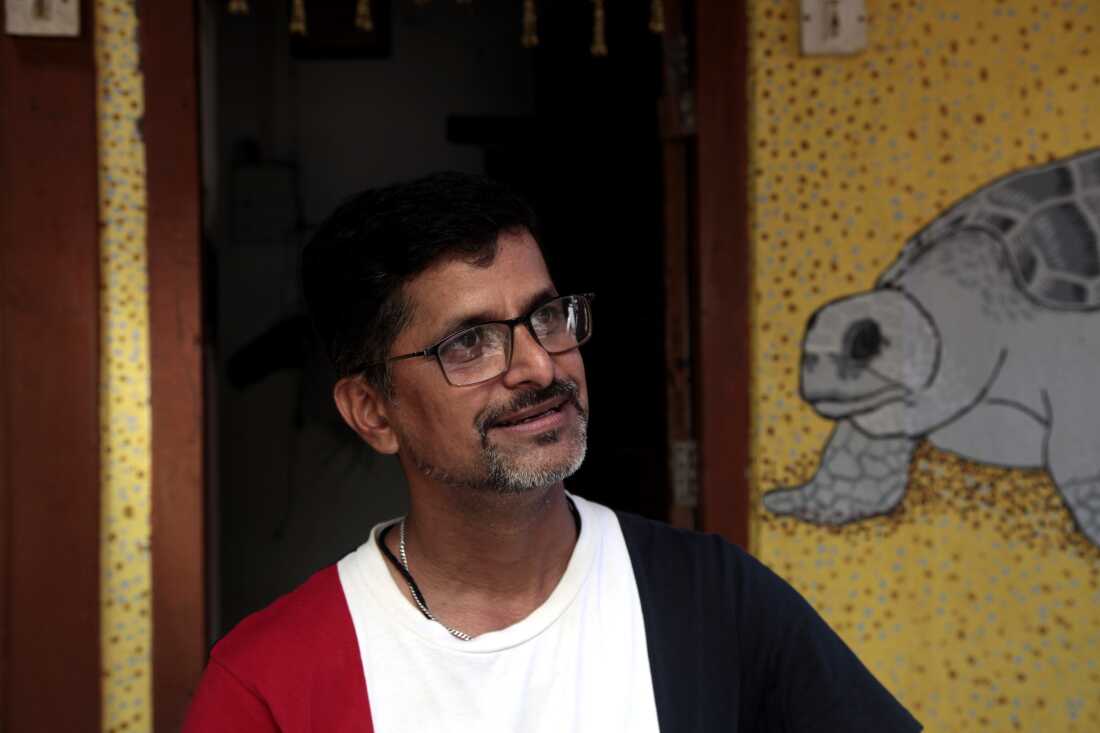
Mohan Upadhye, the founding father of the Velas Turtle Competition, poses for a picture in his residence within the western Indian village of Velas painted with the realm’s fundamental attraction: olive ridley sea turtles.
Diaa Hadid/NPR
disguise caption
toggle caption
Diaa Hadid/NPR
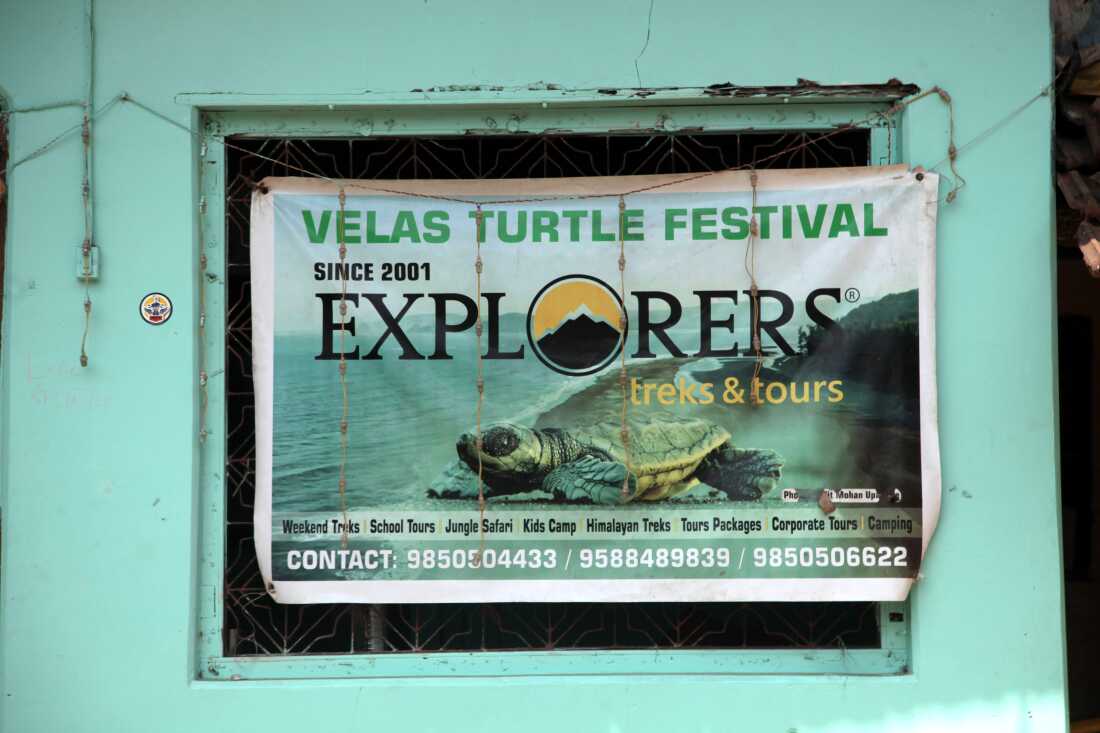
An commercial for the Velas Turtle Competition within the western Indian village of Velas. The pageant is an eco-tourism undertaking that invitations guests to observe olive ridley sea turtle hatchlings enter the ocean.
Diaa Hadid/NPR
disguise caption
toggle caption
Diaa Hadid/NPR
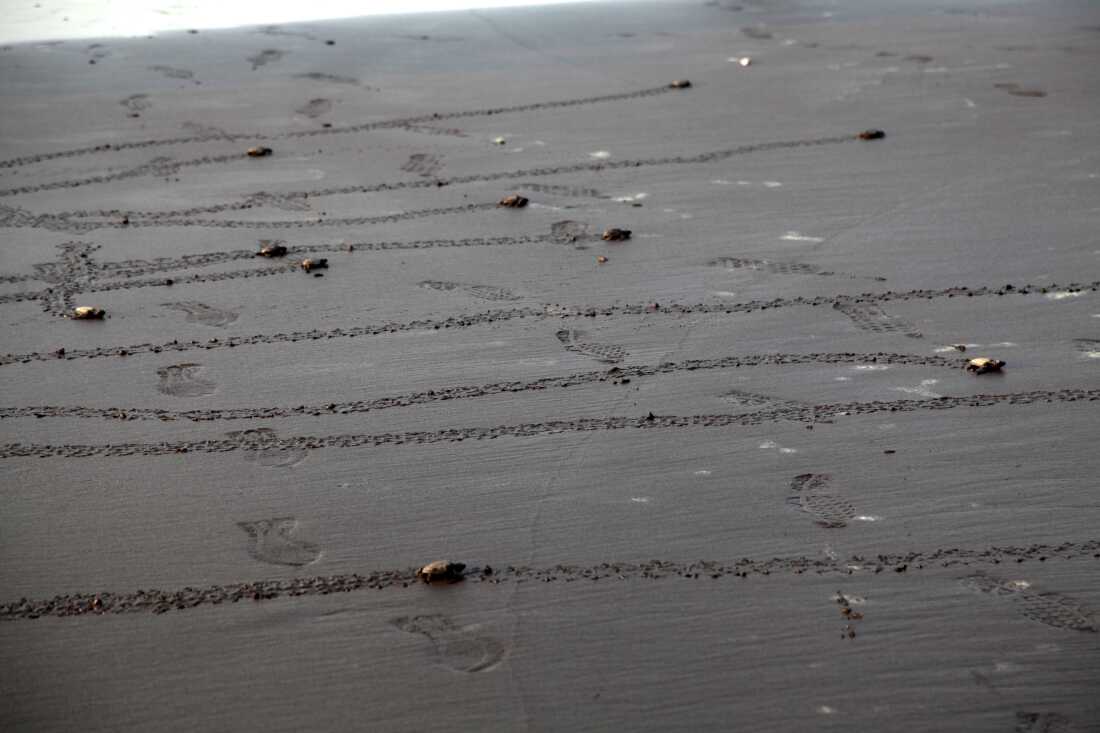
Olive ridley hatchlings crawl alongside the shore by the western Indian village of Guhagar after they had been launched from their protected hatchery by volunteers, in April.
Diaa Hadid/NPR
disguise caption
toggle caption
Diaa Hadid/NPR
Rubbish is an issue, acknowledges pageant supervisor Virendra Ramesh Patel. He says he pays villagers to maintain the seashore tidy — in regards to the equal of $3 per week.
Patel says quite a bit has modified right here. His grandparents used to poach turtle eggs to make omelettes with coconut milk, tomatoes and onions. “Chicken eggs are dull in comparison,” he laughs.
The pageant started with luck a couple of decade in the past, says founder Mohan Upadhye, who sports activities a turtle tattoo emblazoned with “save me.” Conservationists thought olive ridleys had disappeared from this space many years in the past, however within the early 2000s, a employee from an environmental charity stumbled onto a turtle egg shell close by.
Quickly, Upadhye was serving to the charity determine turtle nesting websites and he fell “in love with sea turtles,” he says. He satisfied the Velas council to ban seaside development to guard nesting websites — as a result of a few of the surviving females born on this seashore will return to put their very own eggs. Olive ridleys uniquely will typically nest in a synchronized occasion often known as arribada — Spanish for “arrival” — the place greater than a thousand turtles, typically tens of 1000’s, nest on the identical seashore over a interval of days, together with on the jap Indian coast of Odisha. Upadhye says it is why defending nesting websites is vital to defending the species.
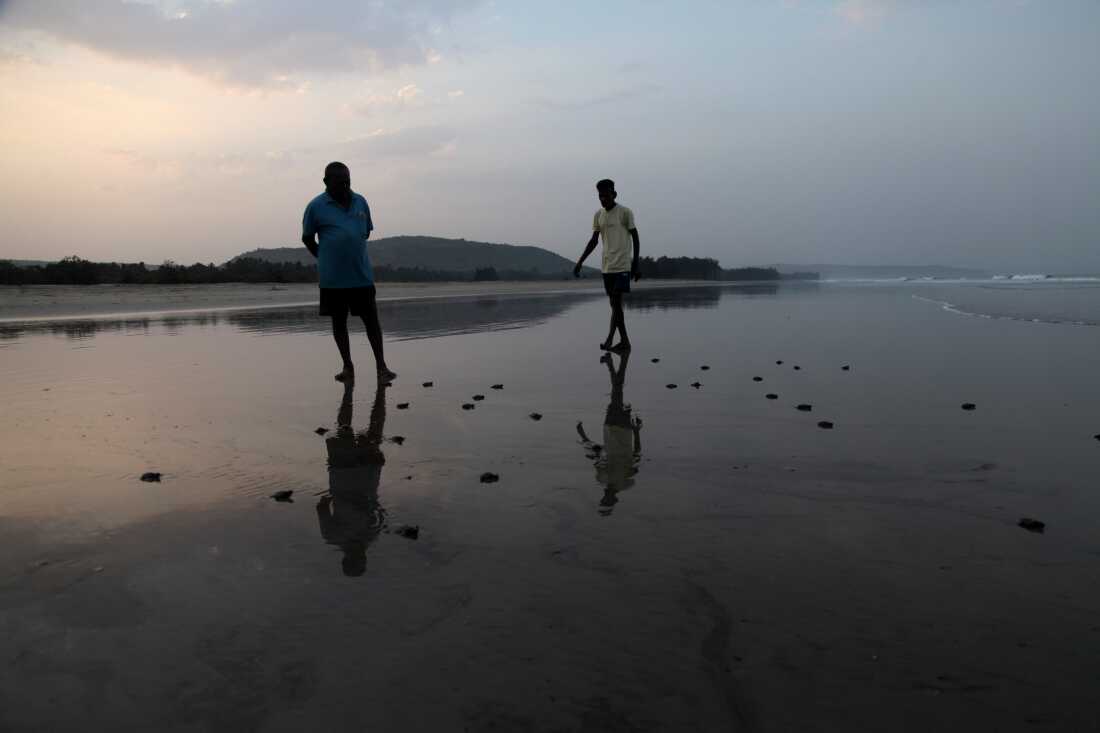
Volunteers examine that every one turtle hatchlings have entered the ocean after they had been launched from a hatchery.
Diaa Hadid/NPR
disguise caption
toggle caption
Diaa Hadid/NPR
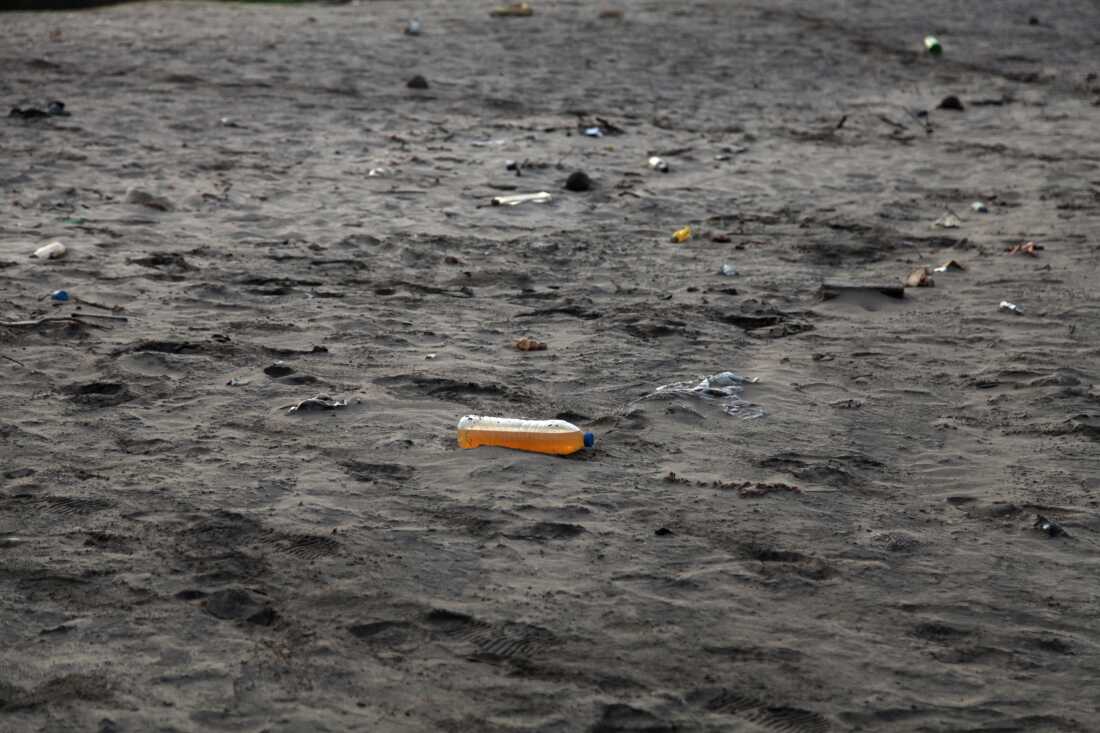
Trash is strew on a nesting website utilized by olive ridley sea turtles. The species is weak to extinction however some efforts in India have helped their numbers enhance. Nonetheless, rubbish is among the many human-made obstacles for the turtles.
Diaa Hadid/NPR
disguise caption
toggle caption
Diaa Hadid/NPR
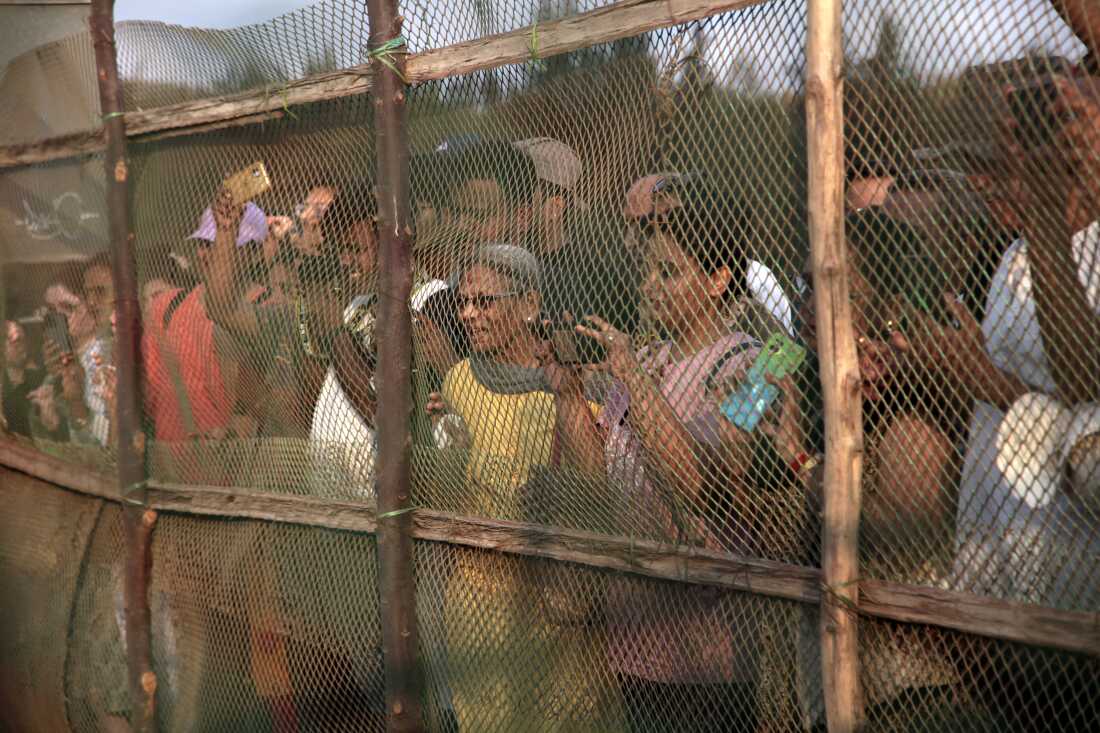
Vacationers collect round a netted hatchery on the seashore on the western Indian village of Velas, the place olive ridley turtles come to nest.
Diaa Hadid/NPR
disguise caption
toggle caption
Diaa Hadid/NPR
Upadhye arrange hatcheries and incentivized conservation efforts by establishing the turtle pageant. It lasts for the two-month hatching season that begins in April.
Whereas olive ridley populations have rebounded throughout India, they nonetheless face grave threats. In January, tons of of useless turtles washed up close to the jap metropolis of Chennai. They appeared to have suffocated in fishing nets of unlawful trawlers. They face newer issues, like consuming plastic dumped within the ocean, which Upadhye says they appear to confuse for “their favorite food — jellyfish.”
And Shanker, the turtle professional, worries that now that their numbers look like rebounding, there will probably be extra strain to loosen protections. “I can see a Port Development Authority saying, why shouldn’t I build a port here? You said that the ridleys were endangered, but apparently they’re not.”
Shanker hopes extra conservationists can work with native communities to revenue from the turtles’ rebound — whether or not via eco-tourism like Velas, or sustainable harvesting of turtle meat or eggs.
A lot of the hassle to guard India’s sea turtles traces again to one man: Satish Bhaskar. A documentary about him was launched this 12 months known as Turtle Walker.
Bhaskar earned the identify after he spent years strolling some 2,500 miles throughout India’s shorelines to review turtles, making a baseline of knowledge that served researchers for many years.

Guests collect to observe olive ridley sea turtle hatchlings lurch into the waves on the seashore on the western Indian village of Velas, in April. An eco-tourism undertaking, the Velas Turtle Competition, invitations individuals to remain in residents’ houses and watch hatchlings enter the ocean. This is likely one of the many patchwork efforts to spice up the numbers of olive ridley turtles after conservationists feared their populations would collapse in previous many years amid industrial-scale slaughter for meat and leather-based, egg poaching, entanglement in fishing nets in addition to coastal developments on their nesting websites.
Diaa Hadid/NPR
disguise caption
toggle caption
Diaa Hadid/NPR
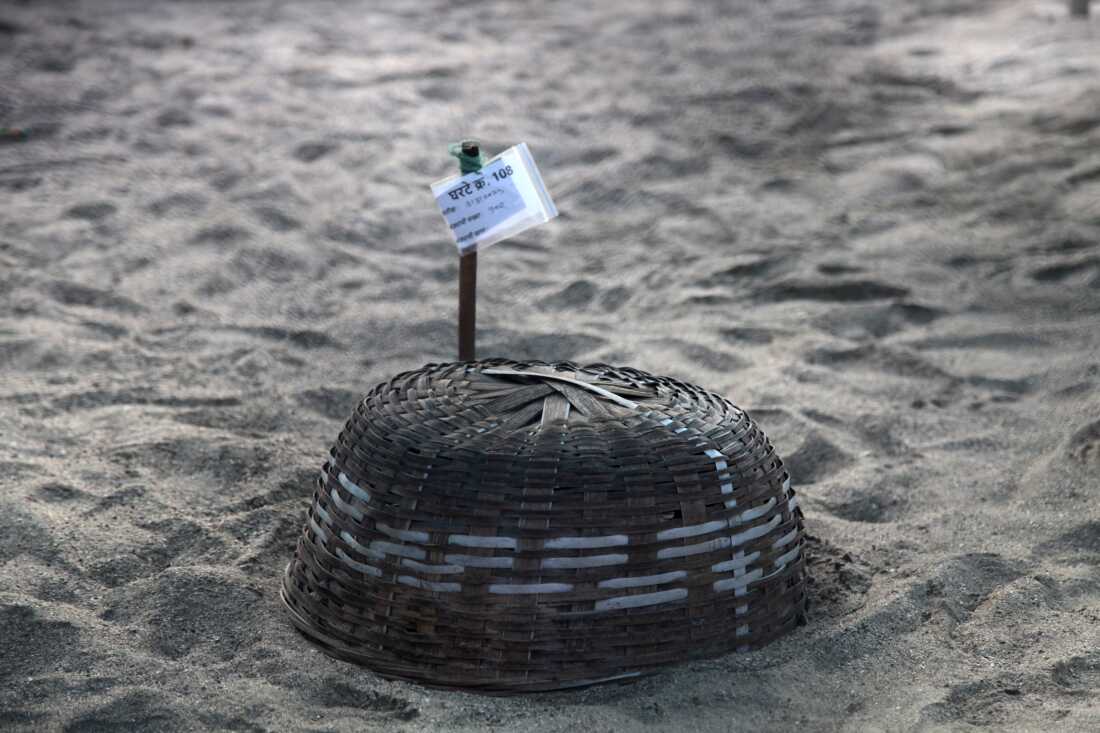
A basket covers an olive ridley nest to assist defend the turtles from predators.
Diaa Hadid/NPR
disguise caption
toggle caption
Diaa Hadid/NPR
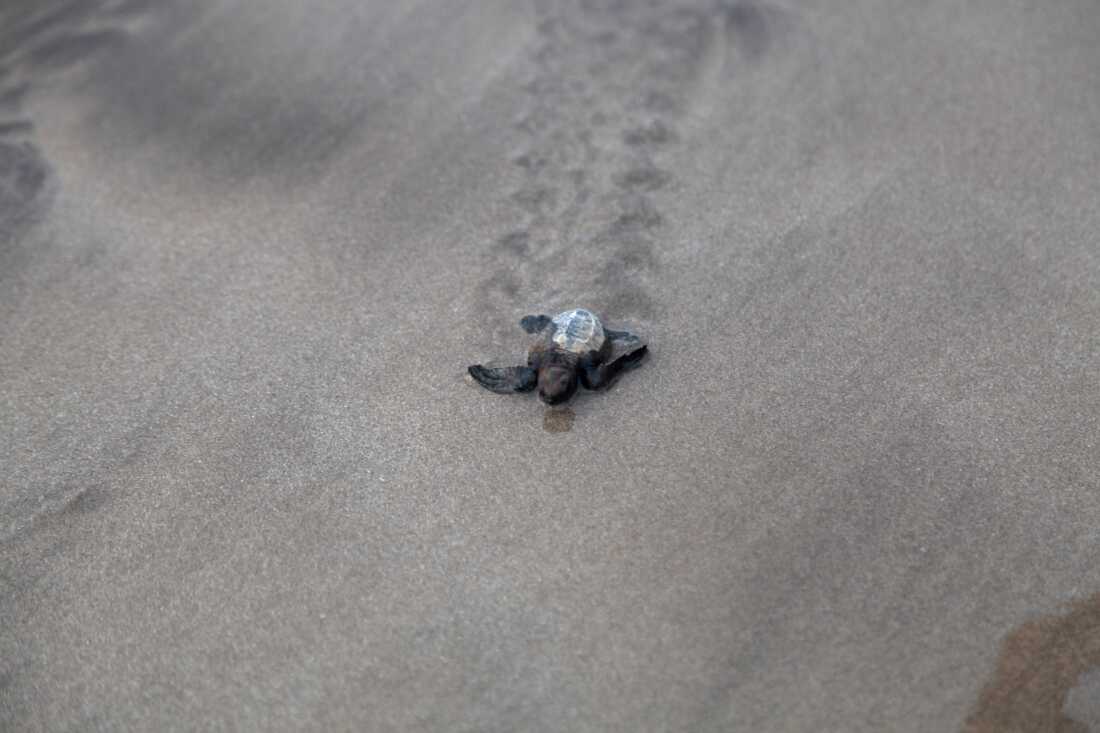
A sea turtle hatchling travels alongside the seashore.
Diaa Hadid/NPR
disguise caption
toggle caption
Diaa Hadid/NPR
Director Taira Malaney says she made the movie to indicate “the power of one person to be able to make an impact on such a grand scale.”
Bhaskar mentored different budding conservationists, making a lineage of turtle folks that reaches all the way in which all the way down to Upadhye in Velas. His mentors, he says, had been mentored by Bhaskar.
And Upadhye hopes that among the many vacationers who cheer on the newborn turtles crawling into the ocean throughout the Velas Turtle Competition, there will be individuals who will settle for the torch he desires to cross on, of turtle conservation.
“This is the time that we have to make future generations aware,” he says. “We have to fight.”
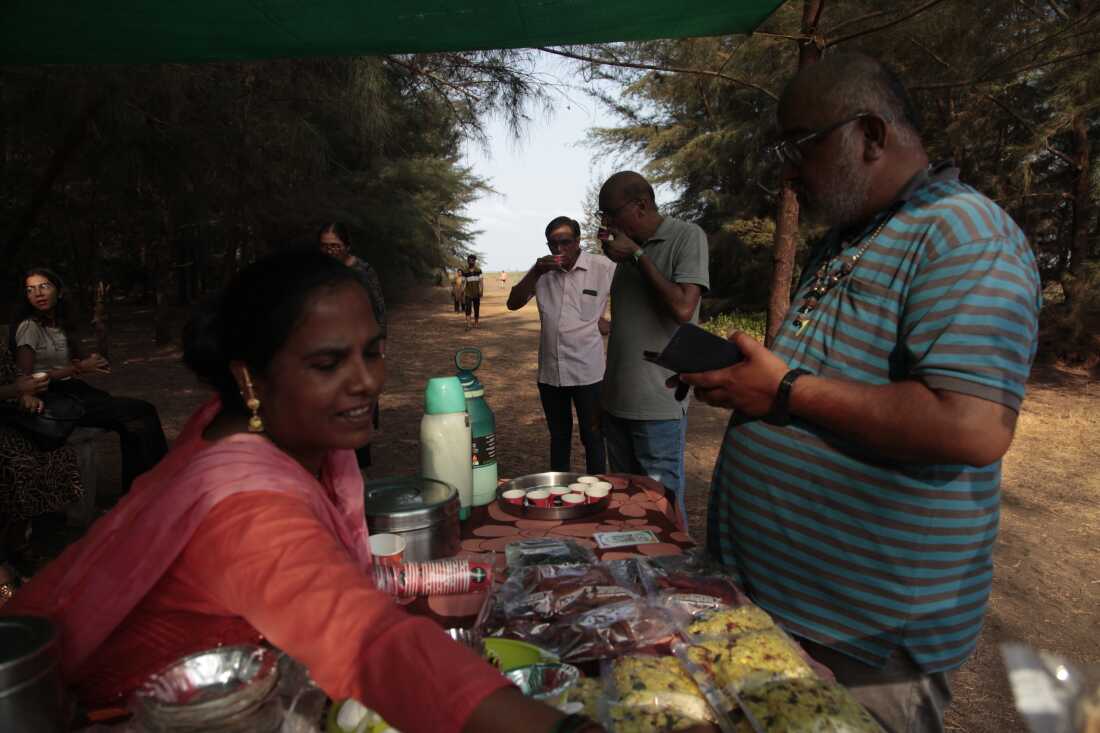
Guests purchase snacks after watching turtle hatchlings crawl to the shore by the western Indian village of Velas.
Diaa Hadid/NPR
disguise caption
toggle caption
Diaa Hadid/NPR
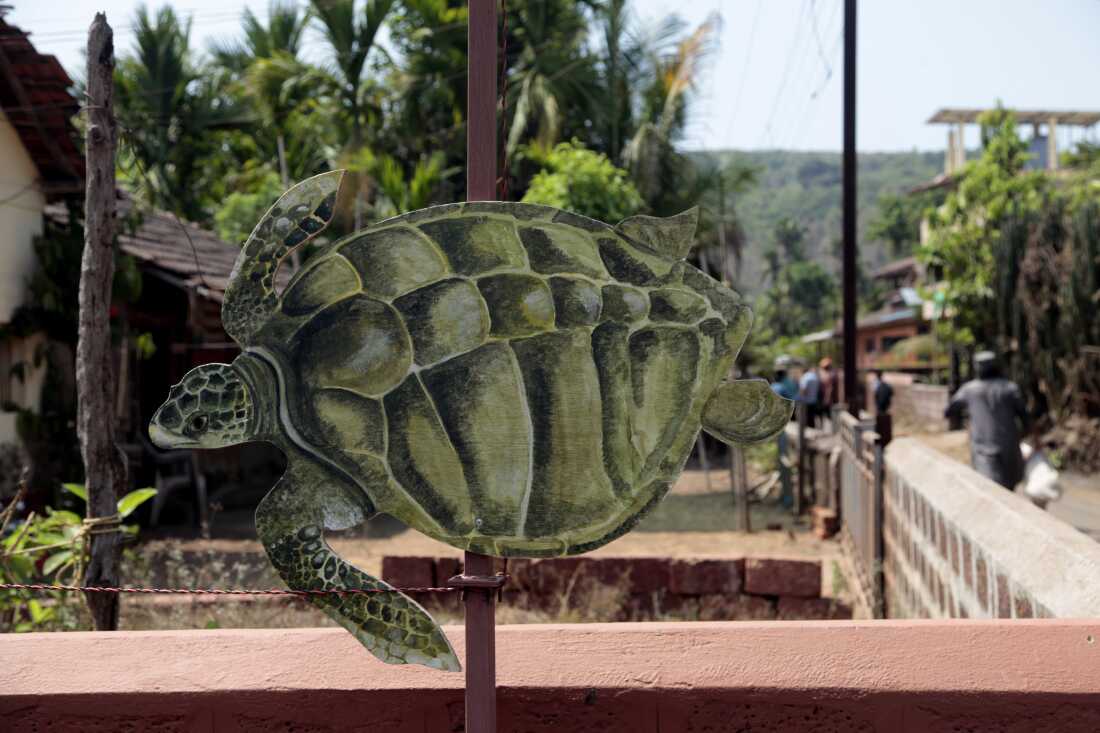
A turtle picture decorates a house within the western Indian village of Velas.
Diaa Hadid/NPR
disguise caption
toggle caption
Diaa Hadid/NPR








